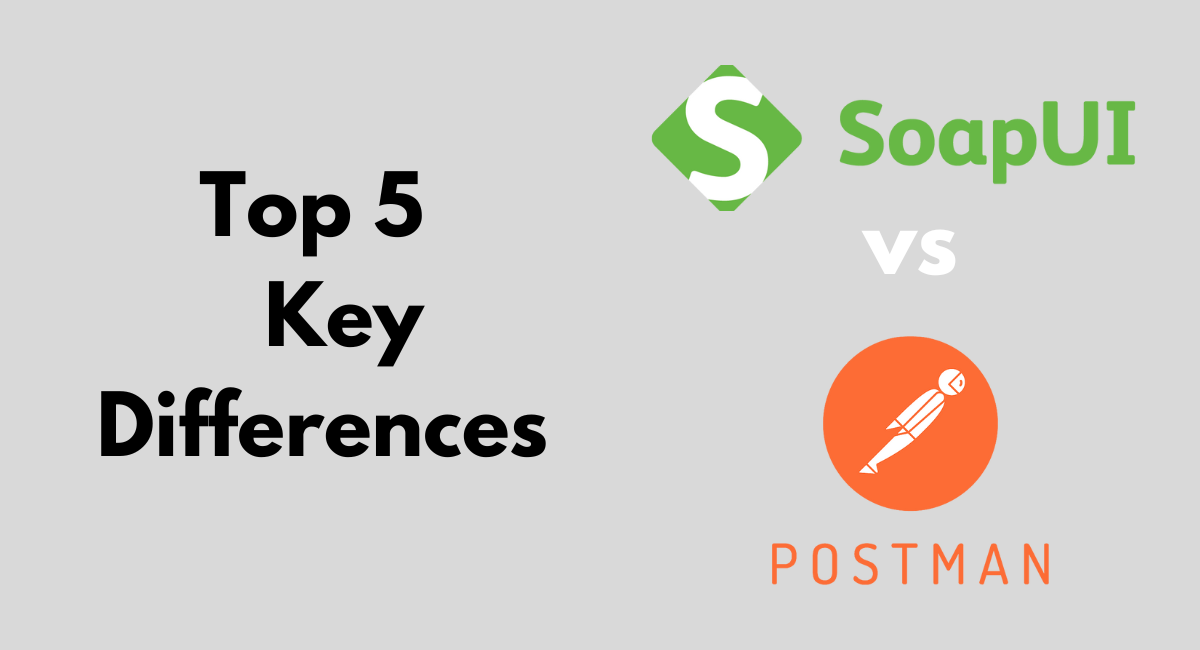Over time, API testing has become a very fundamental component in the modern software development life cycle. It is meant to ensure communication between the many various software systems functions efficiently without errors.
Among many such options available in the public domain for API Testing come two of the most popular amongst these- SoapUI and Postman. These two stand out particularly with unique features and respective capabilities.
Much as they have been designed with the same objective to facilitate seamless API testing, the difference lies in various aspects of the testing need and user preference.
This blog presumes to list the five most important key differences between them that will help you tilt the scale to that tool that might be more appropriate for your testing needs.
No matter whether you happen to be a seasoned developer, test engineer, or project manager, understanding the differences presented will help to set you on your way in picking up the right tool, aligned with the needs and objectives of your team.
Usability
SoapUI usability features

SoapUI, though highly effective, has a more complex interface which can be challenging for beginners. It requires some initial setup and familiarization to efficiently use its features.
Users can create comprehensive test suites and scenarios, which are beneficial for complex API testing environments. However, the complexity can be a barrier for those who seek a quick setup for simpler API requests.
Additionally, SoapUI supports automation scripts written in Groovy, making it highly flexible but again introduces a steeper learning curve for individuals not familiar with programming.
Postman usability features
Postman, on the other hand, lets in with a much friendlier user interface and thus reduces the learning curve that a beginner might have to go through in order to start using APIs.
Postman has clear mechanisms of creating new requests, running them, and viewing the responses without much prior knowledge. Users may save their API requests as collections and share with the rest of their team, thus increasing their collaborative capability.
This ease of use caters not only to professionals but also to students and users who are new to API testing.
Functionality
SoapUI functionalities overview
SoapUI is designed to handle both SOAP and REST APIs but is particularly strong with SOAP services, offering robust support for WSDL testing.
It provides comprehensive testing capabilities including functional testing, security testing, and load testing. Here are some of the standout features of SoapUI:
- Support for complex scenarios: ability to mock services, simulate requests, and inspect responses intensively.
- Real-time monitoring: includes detailed reports and logs which are valuable for diagnosing problems.
- Advanced scripting: users can write custom codes for testing using Groovy which allows for more nuanced test cases.
Postman functionalities overview
Postman primarily supports REST API architectures and has become a standard tool for REST services due to its simplicity and effectiveness.
While it does include some SOAP functionality, its capabilities are naturally aligned with REST API operations. Functionalities include:
- Pre-request scripts and test scripts: allowing users to prepare data before making requests and assert responses afterward.
- Continuous Integration compatibility: Postman can integrate with CI/CD pipelines via Newman, its command-line companion, supporting automated testing cycles.
- Visualization and monitoring: users can visualize API responses directly within the app and monitor API health over time using Postman Monitors.
While both tools have their strengths and limitations, understanding these key usability and functionality differences aid in choosing the right tool for specific API testing needs.
Pricing
SoapUI pricing model
SoapUI offers a two-tiered pricing model catering to both individual developers and large-scale enterprise needs. The basic version of SoapUI is entirely free and open-source, providing fundamental tools necessary for API testing.
This open-source version is a great start for individual developers or small teams just beginning to explore API testing. For more advanced features, SoapUI Pro offers enhanced capabilities such as data-driven testing, advanced assertions, and integration with other tools at a price.
The Pro version is subscription-based, with costs varying depending on the number of users and the specific needs of the organization. There are also tailored pricing plans available for larger organizations that require enterprise-wide deployment.
Postman pricing model
To that, Postman also applies a flexible pricing approach through the availability of a free-of-charge, basic version, which is sufficient for individuals or small teams who just start working on developing and testing an API.
That version covers most the necessary features that are sufficient for testing APIs. For teams and enterprises that need more advanced features to test their API, Postman provides a few different paid plans.
First of all, such plans provide even greater numbers of features, including shared workspaces, expanded collaboration tools, and more in terms of safety and administrative capabilities.
There are also custom plans that can be made available for those specific organizational needs. As such, akin to SoapUI, Postman is going to charge pricing depending on users, and its intention is to house both the solitary developer and the large enterprises.
Integration Abilities

Integration capabilities of SoapUI
SoapUI supports a variety of software development tools and systems, thereby making itself an excellent choice for any user in search of robust and scalable integration solutions.
The tool has features that make it possible to integrate into a variety of popular version control systems like Git and SVN. Consequently, the teams can maintain the synchronization of API tests in step with the practices of software development or customarily as per the required policy of an organization.
Also, with continuous integration/continuous deployment-CI/CD pipelines, besides Jenkins and TeamCity, automated testing as well as deployments are simplified, which means it is easy to integrate SoapUI. That means teams go for DevOps practices where SoapUI proves very valuable.
Integration capabilities of Postman
Postman, on the other hand, also offers strong integration features but with a focus on simplicity and ease of use, especially beneficial for teams that prioritize quick setup and less complex environments.
Postman integrates smoothly with various API gateways and with the Postman API Network, where users can access thousands of public APIs for testing and development.
Moreover, it provides integrated support for syncing with GitHub, enabling users to back up and share their Postman collections and environments.
Postman’s integrations extend to CI/CD tools as well, like Travis CI and Bitbucket Pipelines, empowering teams to automate their API testing workflows without extensive configuration.
Support and Community
When selecting a tool for API testing, the support and community surrounding the software can be a critical deciding factor due to the complexity and evolving nature of APIs. SoapUI and Postman differ significantly in this regard.
So it has a strong user community, since it's an old and well-established tool. There are numerous on-line resources available for users—from forums and tutorials to webinars.
SmartBear, the company behind SoapUI, also offers very valuable professional support and training resources, indispensable for an enterprise team wrestling with hard integration problems.
On the other hand, Postman has a modern and more live community, hyped at its status with the newer generation. Postman's community is a very active one on platforms like GitHub, Stack Overflow, and Postman Community Forum.
All the above aids in quick community-based resolution of any problems arising. Postman goes a step ahead by providing an in-app support chat feature, which enhances the whole user experience by offering real-time assistance.
While both these tools have a lot of documentation and learning resources, the nature and qualities of support can be very different between them, making them either useful or not based on the very specific needs of an organization or the developer.
Book a Demo and experience ContextQA testing platform in action with a complimentary, no-obligation session tailored to your business needs.
Conclusion
In conclusion, both SoapUI and Postman stand out as robust tools for API testing, each catering to different aspects of testing needs and user expertise.
SoapUI, with its extensive protocol support and load testing capabilities, suits more complex integration environments and thorough testing scenarios.
Conversely, Postman is more approachable for beginners, with a straightforward interface and features that enhance both API development and testing processes.
When choosing between the two, consider your team's specific requirements, the types of APIs you work with, and the level of testing complexity needed.
By understanding the key differences highlighted, you can make a more informed decision that aligns with your project goals and streamlines your API testing efforts.
Also Read - Uncaught TypeError : Cannot Read Properties of Undefined
